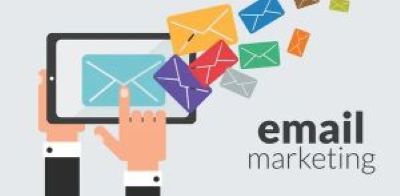How to Nurture Your Customers with Email Marketing Automation
Email marketing automation allows marketers to follow up with customers at an optimal time using automated workflows. This type of targeted messaging helps businesses build stronger relationships with their leads, convert them into customers and then drive sales from existing customers. Email automation takes the repetitive tasks off of your to-do list, so you can spend more time focused on building your business.
Email nurture campaigns are similar to drip campaigns in that they are both a series of emails that are sent to a customer over a specific period. The difference is that nurture campaigns focus on turning potential buyers into loyal customers by providing content and messaging that align with their needs and journey stages, whereas drip campaigns are used to promote products or services.
A good nurturing campaign should provide useful information that improves the lives of your audience. This could include industry news, helpful tips, product demos or how-to guides that make your customers feel like they’re getting a valuable service from you. These types of emails help establish your brand as an expert in the field and build trust, which is vital for converting new customers.
Keeping your email nurture sequences short is essential, as people only spend about 10 seconds reading brand emails. This means that each email should be concise, clear and to the point. Additionally, your emails should have a clear call-to-action (CTA) that will encourage your followers to take the next step on their buying journey.
When creating email nurture campaigns, consider how you can personalize each one for your audience. You can add a person’s name in the subject line, include a personalized message or provide links that redirect to specific landing pages or product categories. These personalized touches can make your emails stand out in the inbox and increase engagement rates.
As with all marketing initiatives, it’s important to set goals for your nurture campaigns that align with your overall marketing and sales strategy. Email automation software can help achieve this by tracking a person’s journey through multiple channels and automatically taking customized actions such as putting a lead into specific nurture campaigns or assigning them to sales teams.
It’s also important to balance the frequency of your emails with the stage that the lead is at in their buyer journey. A new subscriber may need more frequent email communication to spark interest, while established customers might prefer sporadic messages.
Regardless of the frequency, all nurture emails should feature your brand’s logo, tone and style guidelines to ensure consistency and an elegant, professional look. Lastly, it’s important to allow your subscribers to unsubscribe and change their preferences at any time. This helps maintain your brand’s integrity and is a necessary component for complying with CAN-SPAM and CASL regulations.
To create automated email workflows that are responsive to your users, you need an email marketing platform with built-in templates and live device previews. This way, you can test and optimize your content before sending it to your audience.

Free Training
Learn How To Grow Your Email List
Get Access To A Free 6-Part Video Training
Recent Posts
All-in-One Sales Automation Platform
Check out this recent post on all-in-one sales and marketing tools.
Sales Funnels
Check out this recent post on sales funnels and what I think about them. Are they still worth it?
